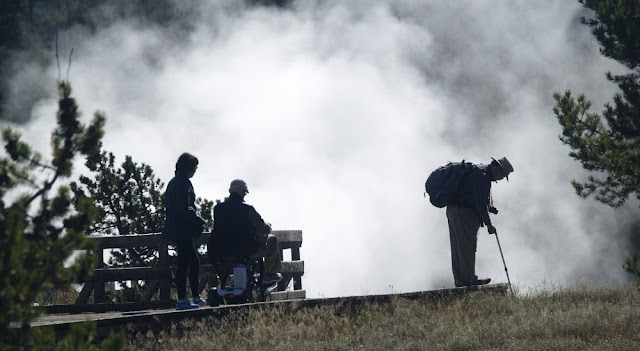Hello, Lana and Nellie
(And Mother Svetlana, Grandmother Larisa and my critic, Marilyn)
I have been remiss by not writing more often, but I hope to make it up to you by including dramatic photos of my trip to Yellowstone. Some of these you have already seen, and others will be new for you. These are my favorite shots.
I also went to Coeur d'Alene Lake, but after Yellowstone I just didn't find much interest in shooting more photos.
This blog is going to consist of photos and commentary, where appropriate. Enjoy!
This is the Hangman's Building in Virginia City, Montana. Inside, there was a beam as wide of the building, from which highwaymen (robbers) were hanged by vigilantes. Vigilantes are men who take the law into their own hands. Inside the building is a diorama depicting the hanging of several individuals while the vigilantes stand guard with rifles.
 |
| Hangman's Building, Virginia City, MT |
Later, this building became the city water works office, which was run by Sarah G. Bickford, a former slave who came west in a covered wagon. The only black in an all-white community, she took over the business when her husband died. In the doorway on the right is a shop that sells rocks, and I purchased two rocks that are a variation of fool's gold. Instead of being iron pyrite (iron and sulfur), they are a fcombination of iron, copper and sulfur. I look forward to presenting them to my two young scholars when we meet next.
 |
| YELLOWSTONE! The "Porcelain Basin," bright white from mineral deposits |
Although it looks like the chipmunk below is trying to smother a giggle, he's just gathering pine nuts for the winter.
This bounder sits atop the slide, which entombed 28 campers who were asleep in the valley. Their names are on a plaque on one side of the rock.
How big is this boulder? If you look really closely, you will see a small sign at its base with a light green top. That sign is between 3 and 4 feet tall.
I hope you have enjoyed the blog.
Love,
Robert










































